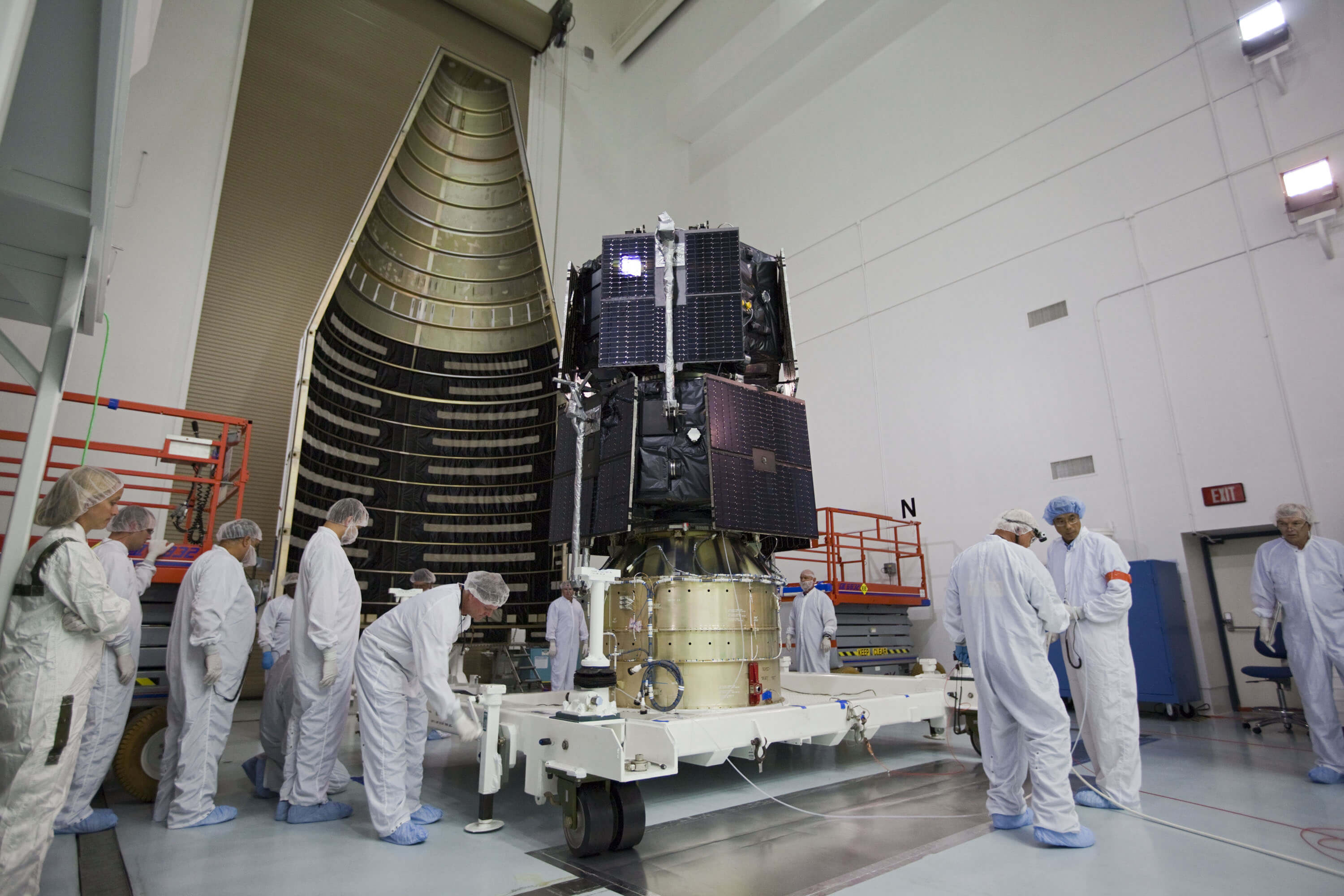For the first time, instead of avoiding and shortening the time spent in the Van Allen belt, NASA will launch satellites that will pass through it. For this, it was required to improve the protection of the sensitive electronics against the radiation

A wide variety of compressed particles are found in the Van Allen radiation belt. This dynamic area changes in response to the sun, and has the potential to affect GPS satellites, satellite TV, and more.
Today, August 30, the RPSP mission (Radiation Belt Storm Probes) was launched from the Kennedy Space Center, which includes two satellites that will measure this frequently changing environment for the first time and study it in depth.
"We live in the Sun's atmosphere, so when the Sun sneezes, the Earth catches a cold," explains Nikki Fox, the project's deputy chief scientist in the Department of Applied Physics (APL) at Johns Hopkins University in Laurel, Maryland. "Therefore whatever happens in the Sun, the Earth will feel the impact and respond to changes in the space weather."
The mission includes two almost twin satellites, each carrying a suite of advanced instruments that will help scientists monitor and characterize the changes in the radiation belt.
"These spacecraft that measure the storm in the radiation belts will give us a better understanding of how those radiation belts work, and will allow us to do a better job of predicting and protecting against radiation in the future," says the mission's chief systems engineer Jim Stratton, also from APL.
The RBSP mission is part of the "Live with the Star" program managed by NASA's Goddard Center and APL, and will last for two years.
The discovery of the radiation belts is one of the first discoveries of the space age. Their existence was discovered in 1958 by Geiger counters on the first NASA spacecraft Explorer 1, built by James Van Allen and his team from the University of Iowa. Now more than 50 years later, RBSP contains a comprehensive set of instruments designed to examine not only the particles within the radiation belt but also the plasma waves, electric and magnetic fields that conduct these particles.
The mission requires two spacecraft because the scientists want to detect long-term changes. "If you have two lifebuoys in the ocean and one of them rises and falls again you know nothing about the cause of the rise and fall." Fox explains. "If they both go up, you know there is something affecting them both at the same time. If first one goes up followed by the other you can measure the speed of the wave between the two wheels, and its direction. And if only one goes up and down and the other does not move, it means that there is a local phenomenon that is not moving anywhere. In this way, the two spacecraft will be able to check fine details in the radiation belt." saying.
The spaceships built from eight pods each weigh 635 kg, are about 2 meters wide and about a meter high. However, the magnetic field and electric field sensors are stretched by cables away from the spacecraft to avoid measuring the electric and magnetic fields of the spacecraft themselves. Data filters and metal shields covering the spacecraft's electronic components will prevent interference as well as protect against the harsh environment the spacecraft will encounter every day.
"It is clear that the big challenge will come from the strong radiation environment in which the spacecraft will fly," said Stratton. "Most spacecraft try to avoid flying in the radiation belt. We fly directly to the heart" she said.

One response
On manned flights...